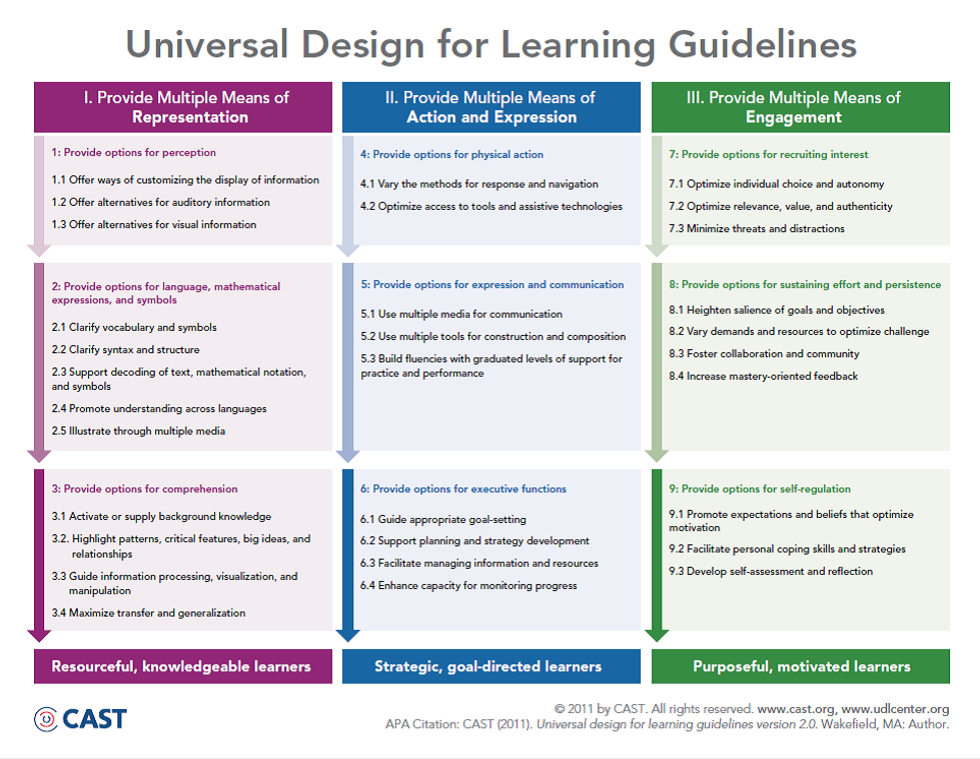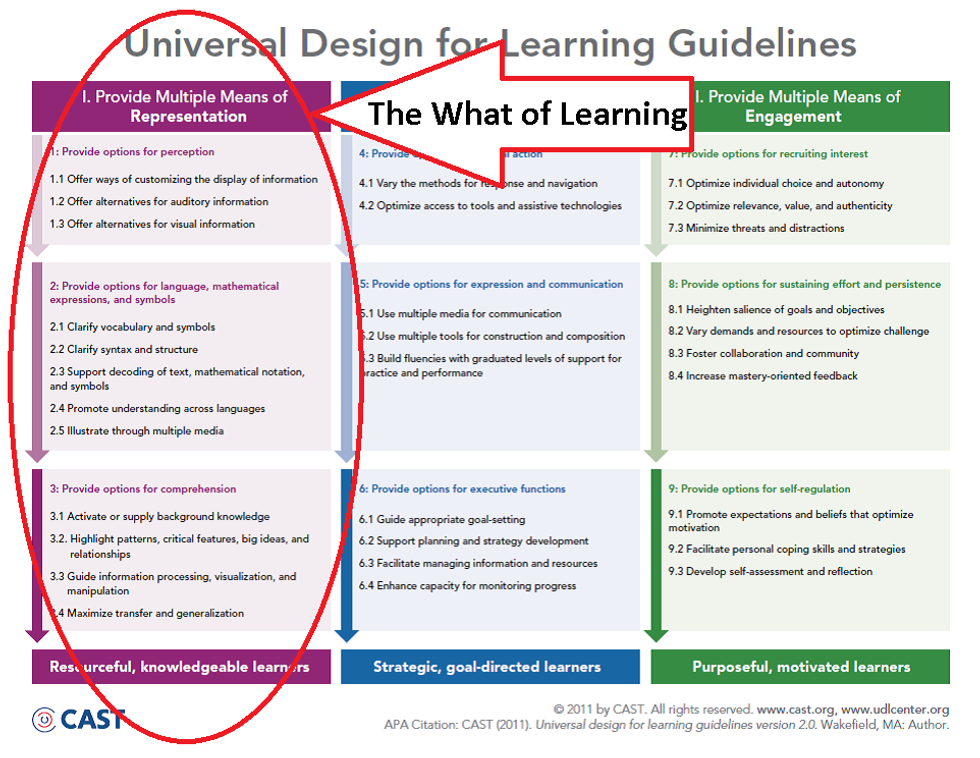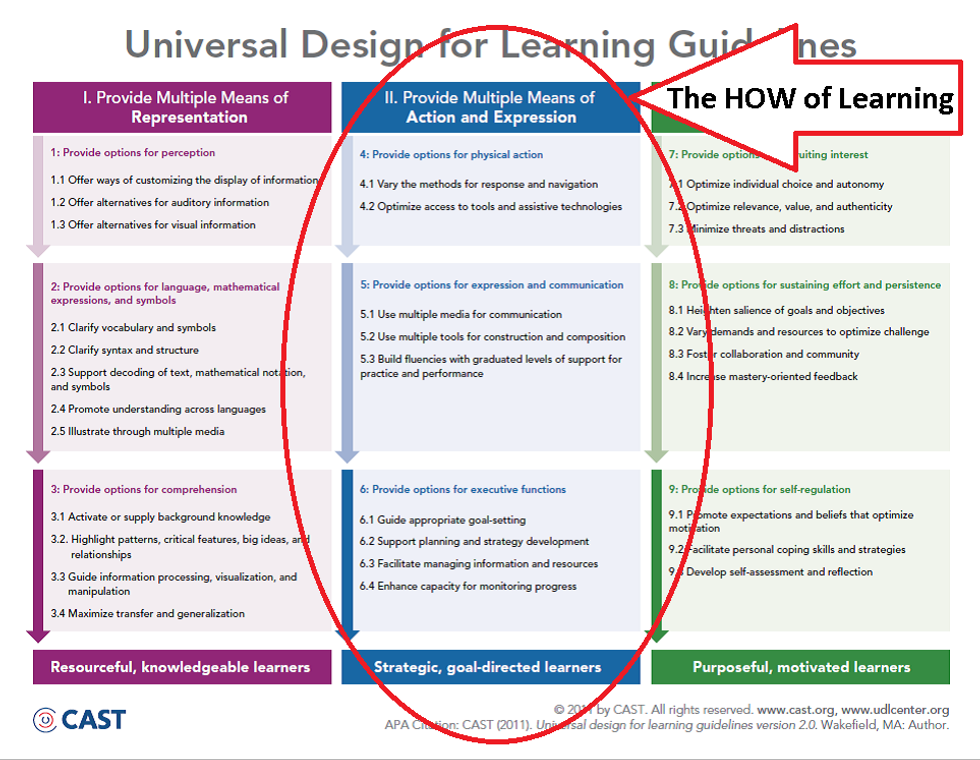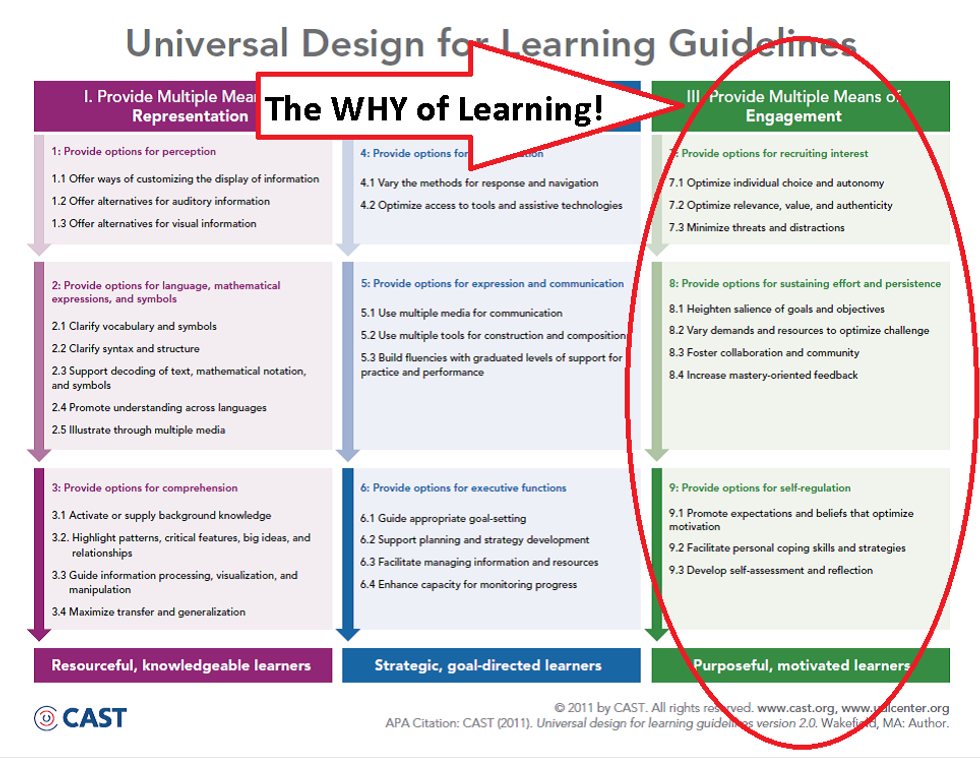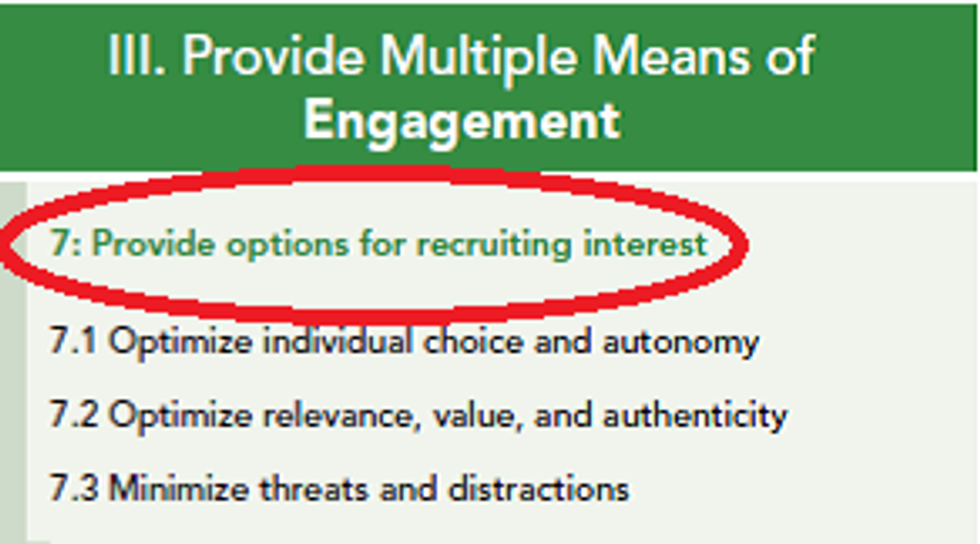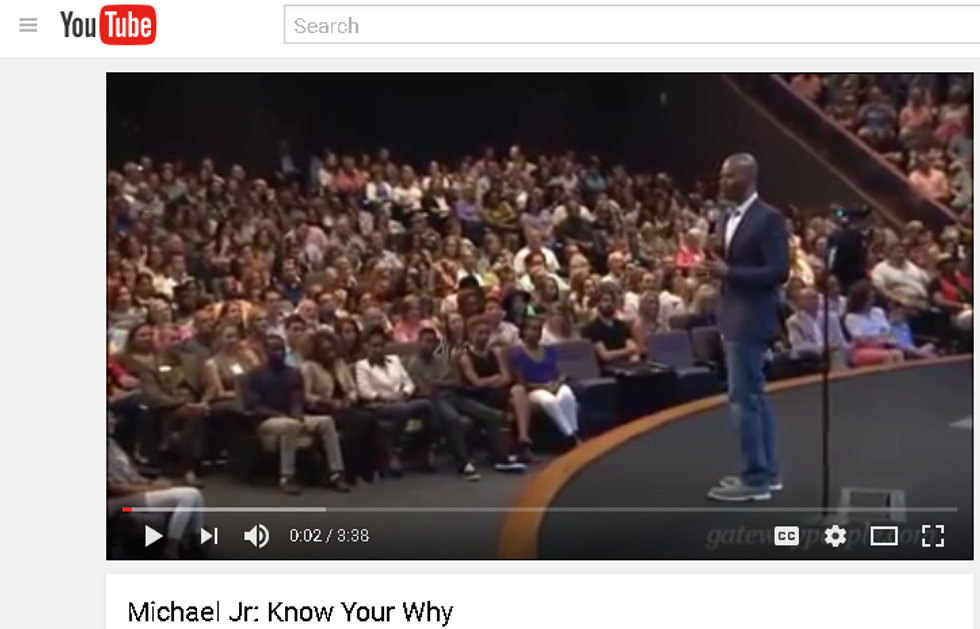https://t.co/Xlr4O8mN6pOf the three networks of the brain associated with learning, we are ready to take a closer look at the Affective Network, the principle of Engagement or the WHY of Learning!
Quick Recap about UDL: Starting with the base knowledge that Universal Design for Learning (UDL) is a framework for designing and delivering instruction based on the three networks of the brain associated with learning:
1. The Recognition Network or the What of learning
2. The Strategic Network or the How of learning
3. The Affective Network or the Why of learning (CAST 20012)
The three broad networks support the three principles of UDL (I) Provide multiple means of representation; (II) provide multiple means of action and expression; and (III) provide multiple means of engagement” (Rose & Meyer, 2002) and the subsequent nine guidelines (diagram below).
We previously looked at the overarching principles of representation and action & expression.
Please see the following links to review the principle of representation and guidelines 1-3:
- Guideline 1: options for perception: Universal Design for Learning: Taking a Deeper Dive
- Guideline 2: options for language, mathematical expressions, and symbols: Universal Design for Learning: Taking a Deeper Dive 2.
- Guideline 3: options for comprehension: Universal Design for Learning: Deeper Dive 4.
Please see the following links to review the principle of action & expression and guidelines 4-6:
- Guideline 4: options for physical action Universal Design for Learning: Deeper Dive 4
- Guideline 5: options for expression and communication Universal Design for Learning: Deeper Dive 5
- Guideline 6: options for executive functions Universal Design for Learning: Deeper Dive 6
We are going to move to the principle of engagement, the affective network of the brain or the why of learning and build on that understanding as we move to a more acute understanding of guideline seven: provide options for recruiting interest.
The affective networks of the brain are associated with the principle of engagement or the WHY of learning.
The affective networks “monitor the internal and external environment to set priorities, to motivate, and to engage learning and behavior” (Meyer, Rose, & Gordon p.54). Engagement is the doormat that welcomes or diverts the learner. The principle of engagement, as the preceding principles, is divided into three guidelines: options for recruiting interest, options for sustaining effort and persistence, and options for self-regulation.
Let’s zero in on our first of three guidelines under the principle of engagement: guideline 7: options for recruiting interest (below).
What: Options for recruiting interest can also be defined as providing students options to care, value, and find relevance. Recruiting interest in concerned with the attention and engagement of the student and that interaction in learning. Lord Nelson (p.53) suggests that recruiting interest is about more than entertainment, it supports depth of interest that allows a student to find relevance and value in the learning experience. When placing the "doormat" of learning out for connection, some possible variabilities to consider could be:
How: Since this guideline is concerned with the emotional components of learning, it is important to attend to a students need for choice and autonomy, and authenticity while minimizing threats and distractions. Some great questions to ask when design the learning environment and lesson are:
- Have I offered choice in meeting the objective?
- Have I made topics relevant to my students?
- Is the learning environment safe and free from distractions?
- Have I simplified directions?
When planning, some of the following examples can be considered:
Why: When attending to the principle of engagement it is important to remember the brain is goal directed by nature. Regardless of whether the learning environment and the lesson welcomes attention and engagement or diverts attention and engagement, their attention will be somewhere. It is also important to remember that "students also may be paying attention to your unintended messages, or your hidden curriculum, instead of your actual lesson" (Novak p. 29). The real question behind WHY is what is the goal? If you do not know your why, you probably do not give too much credence to the goal. Students need to know their why!CAST, Inc. (2012) Retrieved from: http://www.udlcenter.org/aboutudl/whatisudl
Lord Nelson, Loui. (2014) Design and Deliver: Planning and Teaching Using Universal Design for Learning. Baltimore, MD: Brookes Publishing.
Meyer, A., Rose, H. D., Gordon, D. (2014). Universal Design for Learning, theory and practice. Wakefield, MA: CAST Professional Publishing.
Novak, Katie. (2014)) UDL Now. Wakefield, MA: CAST Publishing.




